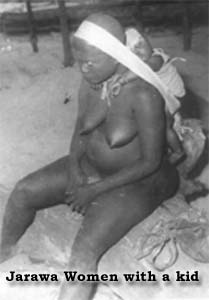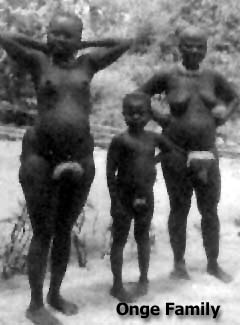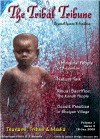Aboriginal People of Andaman
Andaman and Nicobar Islands are situated in the Bay of Bengal as a chain of islands, spreading over 600 miles from North to South. All of these Islands are not inhabited by people. The Andaman Islands are divided into north and south and little Andaman. The Nicobar Island groups are also divided into Northern Car Nicobar and the Great Nicobar. The total land area of the territory is 8249 square miles. These groups of islands remain under British occupation till 1942 and are occupied by Japanese till end of the world war-II. In 1947 the Islands came under India and governed as Union Territory.
As per the census 2001, the territory has two districts, seven tahasils and 547 villages with three towns. The population composed of 192, 972 male and 163,180 female. the total tribal population is 8.27% of the total population of the area, consisting of 15,127 male and 14,342 female.
Situated much away from the main land are the heart of the sea, the islands have very rich flora and fauna. The tribal people exploit these natural resources of food from the forest, the beach and the sea. They do not have the knowledge of any metal use and textile. Traditionally they decorate their body with indigenous paints, cowries, shells of various sea oysters. The tribal communities of Andaman islands are all dependent on forest resources and catching fish, turtles etc from the sea and inland waters. The Andamanese move from one place to another and establish their camp at some place to exploit the local resources for a specific period of time. Their main implements are simple digging stick, knife and bow and arrow. The Onges use dug-out canoe for sea faring activities. Fishing is done by bow and arrow. The sea animals and land animals like deer wild boar etc fulfill their need for animal protein. The forest supplies plenty of edible fruits, underground tubers and honey for their sustenance. Agriculture or other types of food production is unknown to them. Now a days the government helps them in various ways.
Lifestyle: These people did not know to produce fire but did preserve fire obtained from natural sources. They learnt the method of producing fire by friction of wood (drilling from the people of Mayanmar). Now a days they have started using match boxes obtained from the government sources bun not plentily available. The Onges live in villages. which consists of separate huts. The married couple have their own hut. The unmarried young boys and girls so also the widow and widower have their separate dormitories. The huts are arranged around an open ground. The houses are thatched with wild grass. Land is owned by the community and there is no private ownership. As trees are very valuable for providing fruits any person marks a tree for exclusive ownership which has to be recognised by the community. That tree should not be claimed by any other person. Ownership and tenure of the occupancy has to be approved by the community. The Andamanese are more nomadic so they mostly leave in camps. Each group approximately consist of ten family. There are three types of camps. Permanent, temporary and hunting. The permanent camps are almost like villages consisting of circular huts as mentioned above. The temporary camps and the hunting camps are erected when the group moves over to the shore or deep in the forest in search of games. These camps are made in a very inexpensive way only to be abandoned after the local resources are utilised.
The Andamanese, Onges and Jarwas do not practice very closed relation marriage and avoid marriages within the same village. The marriage ceremonies are very simple. The bride and the Groom sit at opposite ends of a dancing ground along with their friends and relatives. The priest asks the bride that she should be faithful to her husband and ensure that her husband must not be involved with other woman. Similarly the bride groom is also advised to look after his wife. Then they are bathed and asked to sit side by side. The friends of the bride start crying loudly at this stage and the groom start running away. The groom is caught by his friends and brought to the place and the marriage is solemnised. The status of the wife becomes high when she gives birth to the child. When the husband comes back to his house after an expedition he should first address his wife if she has a child, and then to his other kinsmen. If the wife is barren, the husband will first address his kinsmen and then his wife.
|
Photograph Source : Author
Note: Some of the information of this paper is based on the observation by Shri U. P. Mohanty an ex-serviceman Indian Navy who spent five years in the Andamans from 1987 to 1991.
References :2001 Census of India - 2001, Andaman and Nicobar islands, series - 26, Final population Tables, Provisional population Tables, paper-2 of 2001 Director of census operation, Andaman and Nicobar islands.
Grolier Inc. 1997 The encyclopedia Americana, International Edition Volume 1, Grolier Inc. Danbury







